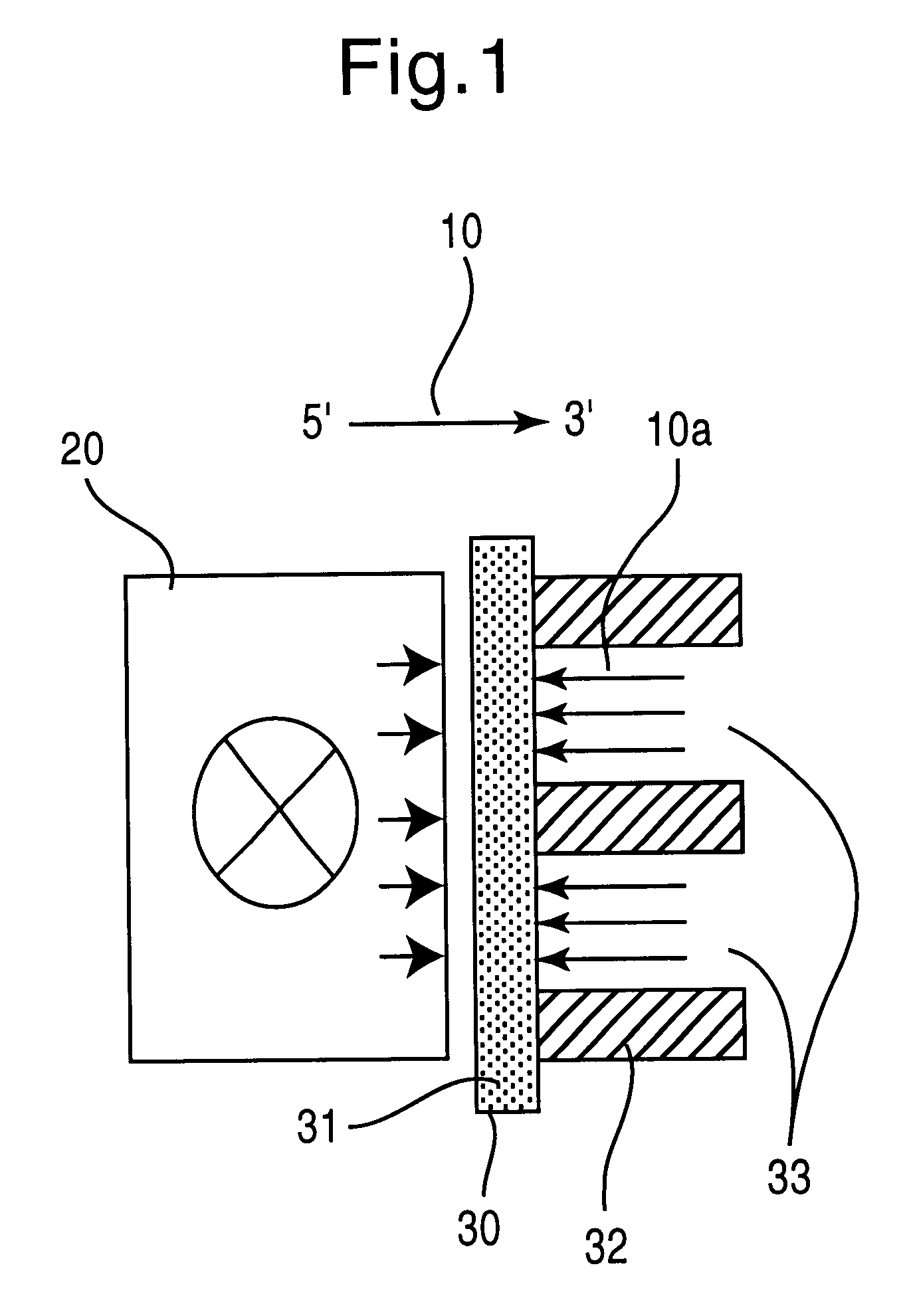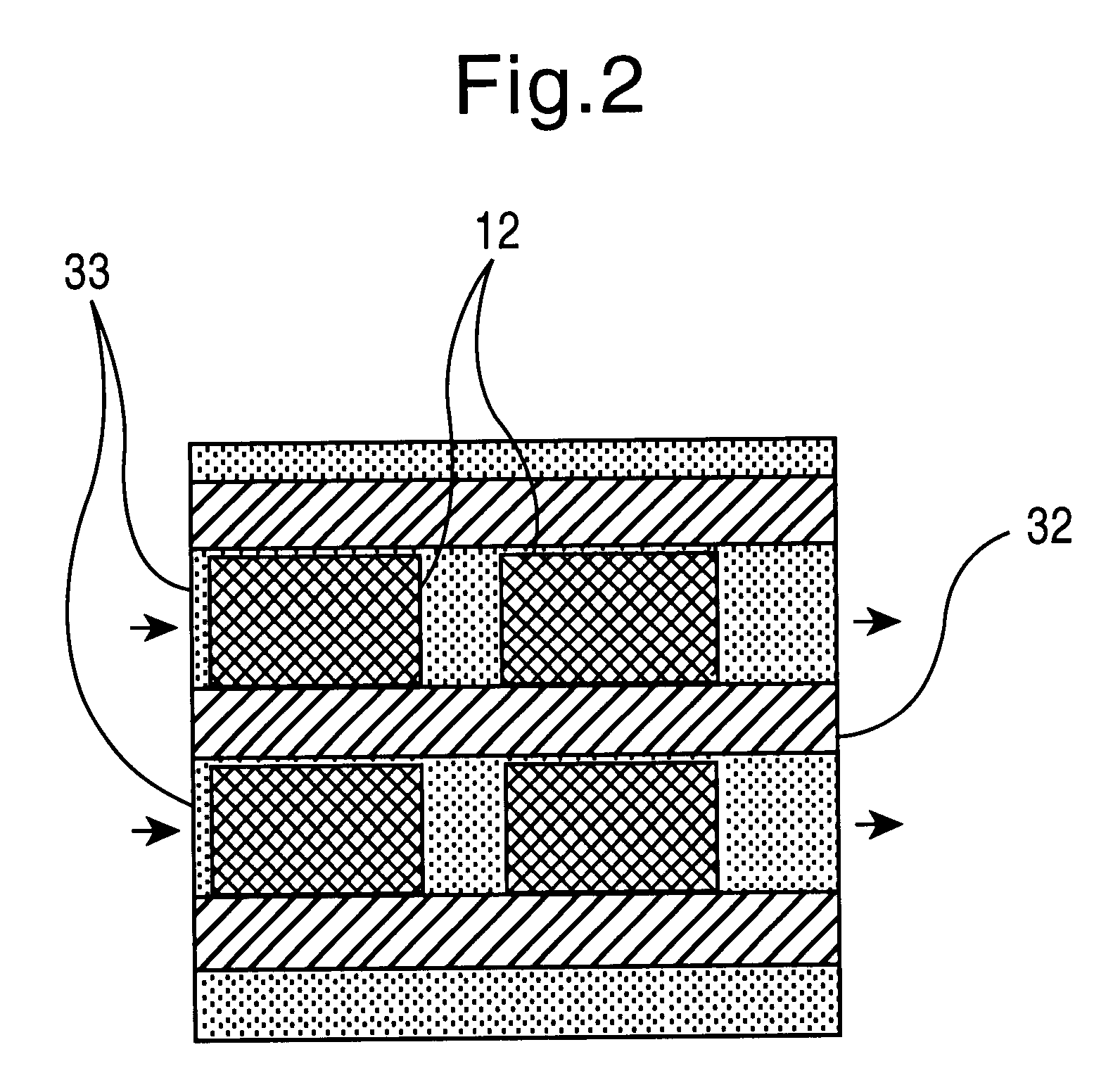Method for producing polymers
a polymer and polymer technology, applied in the field of polymer production methods, can solve the problems of insufficient automation and acceleration, insufficient dna preparation, time-consuming and laborious corresponding work,
- Summary
- Abstract
- Description
- Claims
- Application Information
AI Technical Summary
Benefits of technology
Problems solved by technology
Method used
Image
Examples
Embodiment Construction
To carry out the method, the present invention requires the provision of a large number of nucleic acid molecules, usually DNA, whose sequence can be freely determined. These building blocks must have virtually 100% identical sequences within one building block species (analogously to the synthesis performance of conventional synthesizers). Only highly parallel synthesis methods are suitable for generating the required variance. In order for the system to be able to work flexibly and, despite the necessary multiplicity of different building blocks to be synthesized, to require as little space and as few reagents as possible, the method is preferably carried out in a microfluidic system within which the individual sequences are produced in a determinable form. Two types of programmed synthesis are suitable for systems of this kind, which are also described in the patent applications DE 199 24 327.1, DE 199 40 749.5, PCT / EP99 / 06316 and PCT / EP99 / 06317: these are first the synthesis by ...
PUM
| Property | Measurement | Unit |
|---|---|---|
| length | aaaaa | aaaaa |
| time | aaaaa | aaaaa |
| flexibility | aaaaa | aaaaa |
Abstract
Description
Claims
Application Information
 Login to View More
Login to View More - R&D
- Intellectual Property
- Life Sciences
- Materials
- Tech Scout
- Unparalleled Data Quality
- Higher Quality Content
- 60% Fewer Hallucinations
Browse by: Latest US Patents, China's latest patents, Technical Efficacy Thesaurus, Application Domain, Technology Topic, Popular Technical Reports.
© 2025 PatSnap. All rights reserved.Legal|Privacy policy|Modern Slavery Act Transparency Statement|Sitemap|About US| Contact US: help@patsnap.com



